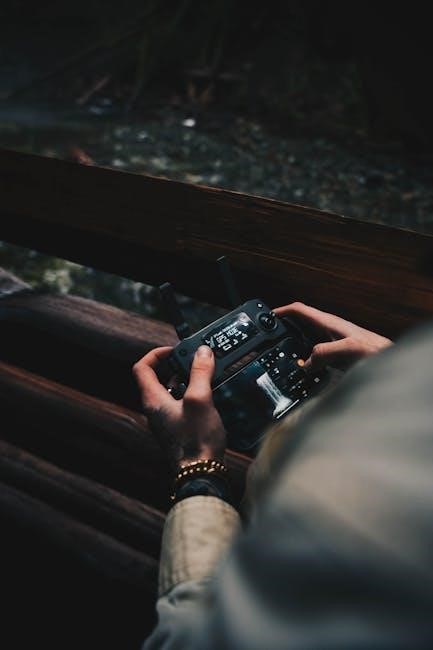Weber Genesis User Manual: A Comprehensive Guide
This guide details assembly, safety, and maintenance for Weber Genesis grills, like the II series. Access the PDF manual online for troubleshooting and warranty details.
The Weber Genesis grill series represents a pinnacle of outdoor cooking technology, offering a diverse range of models designed to elevate your grilling experience. From the foundational Genesis to the advanced Genesis II and II LX lines, these grills are renowned for their durability, performance, and innovative features.
This series caters to various grilling preferences, providing options with different burner configurations, cooking areas, and specialized functionalities. Weber prioritizes user-friendliness, ensuring that both novice and experienced grillers can achieve exceptional results. The Genesis grills are built to last, utilizing high-quality materials and robust construction. Accessing the official user manual is crucial for understanding your specific model’s capabilities and maximizing its potential.
Understanding Your Genesis Model
Your Weber Genesis grill, whether it’s a classic, II, or II LX, possesses unique features and specifications. Identifying your specific model – like the SE-335 or E-310 – is the first step. The owner’s manual details these specifics, including burner capacity, cooking area dimensions, and available features like Sear Stations or side burners.
Familiarize yourself with the grill’s components: burners, flavorizer bars, cooking grates, and grease management system. Understanding how these parts interact is vital for optimal performance and maintenance. Referencing the manual’s diagrams and explanations will ensure you’re equipped to operate and care for your Genesis effectively.
Assembly Instructions

Proper assembly is crucial for safe and efficient grilling with your Weber Genesis. Always consult the official owner’s manual for detailed, step-by-step instructions specific to your model. Carefully unpack all components and verify against the parts list to ensure everything is present.
Follow the manual’s diagrams closely, paying attention to the correct orientation of each part. Securely tighten all bolts and screws, but avoid over-tightening. Incorrect assembly can compromise the grill’s stability and safety. Refer to the manual for guidance on installing burners, flavorizer bars, and cooking grates.
Tools Required for Assembly
Successful Weber Genesis assembly requires a few essential tools. A Phillips head screwdriver is vital for most connections, alongside an adjustable wrench for gas line fittings. A rubber mallet can assist with gently securing components without causing damage.
Consider having a level to ensure the grill sits evenly on its base. Gloves are recommended to protect your hands during the process. While not always necessary, a socket wrench set can expedite certain steps. Always refer to your specific model’s manual for a complete list of recommended tools.

Step-by-Step Assembly Process
Begin by unpacking all components and verifying against the parts list in your Weber Genesis manual. Start with the base frame, attaching legs and casters securely. Next, assemble the burner housing and carefully install the burners, ensuring proper alignment.
Connect the gas lines, meticulously checking for tightness to prevent leaks. Attach the cooking grates, warming rack, and flavorizer bars. Finally, install the lid and side shelves. Always consult the manual for detailed diagrams and specific instructions for your model.
Safety Precautions
Prioritize safety when using your Weber Genesis grill. Always inspect gas connections for leaks using a soapy water solution before each use – never a flame. Ensure adequate ventilation and keep the grill away from flammable materials.

Never leave a lit grill unattended. Keep children and pets at a safe distance. Follow all assembly and maintenance instructions outlined in the owner’s manual to prevent malfunctions. Regularly check for burner obstructions and gas leaks, addressing issues promptly.
Gas Connection and Leak Checks
Before each use, meticulously check all gas connections for secure fittings. Prepare a solution of soapy water and apply it to the gas hose, regulator connections, and burner valves. Observe for bubbles, indicating a leak – if bubbles appear, immediately turn off the gas supply.

Do not use an open flame to check for leaks; this is extremely dangerous. Ensure the gas tank is properly secured and positioned. Refer to your Weber Genesis manual for detailed instructions and diagrams. Never attempt to repair a gas leak yourself; contact a qualified professional.
Safe Grilling Practices
Always grill in a well-ventilated area, away from flammable materials. Never leave a lit grill unattended. Keep children and pets a safe distance from the grilling area. Use long-handled grilling tools to avoid burns. Ensure the grill is on a level, stable surface.
Avoid wearing loose clothing while grilling. Never attempt to move a lit grill. Refer to your Weber Genesis manual for specific safety guidelines. Properly dispose of grease and drippings to prevent fires. Be mindful of wind conditions when grilling.
Operating Your Weber Genesis Grill
Familiarize yourself with your Weber Genesis model’s controls before operation. Ensure the grill lid is open when igniting the burners. Follow the manual’s instructions for proper burner ignition. Adjust the burner control knobs to achieve desired temperature settings. Preheating is recommended for optimal cooking results.
Monitor the grill’s temperature using the built-in thermometer. Avoid overcrowding the cooking surface. Use appropriate grilling techniques for different foods. Refer to the manual for specific cooking guidelines. Always turn off the burners and gas supply after use.
Igniting the Burners

Open the grill lid completely before attempting ignition. Turn the burner control knob to the “High” position. Press the igniter button repeatedly until a steady flame appears. If the burner doesn’t ignite after several attempts, turn off the gas and wait five minutes before trying again.
Check for obstructions in the burner tubes. Ensure the igniter is clean and functioning correctly. Some models may require manual lighting with a long-handled lighter, as detailed in the manual. Never lean over the grill when lighting.
Temperature Control and Settings
Adjust grill temperature using the burner control knobs. Higher settings deliver more heat, while lower settings provide gentler cooking. Utilize the thermometer on the lid to monitor internal grill temperature accurately. Experiment with different knob positions to achieve desired cooking results.
For searing, use the highest setting. For indirect cooking, light burners on one side and keep food on the unlit side. Refer to your Weber Genesis manual for specific temperature guidelines for various foods. Precise control ensures perfectly cooked meals.
Cleaning and Maintenance
Regular cleaning extends your Weber Genesis grill’s lifespan. After each use, brush the grates to remove food residue. Periodically wash the grates with warm, soapy water. Inspect burners for obstructions and clean as needed. Empty the grease trap frequently to prevent flare-ups.
Deep cleaning involves removing components for thorough washing. Consult your owner’s manual for detailed instructions. Proper maintenance ensures optimal performance and safety. Following these steps guarantees a consistently excellent grilling experience for years to come.

Routine Cleaning Procedures
After every grilling session, allow the grill to cool completely. Then, use a grill brush to thoroughly clean the cooking grates, removing any remaining food particles. Empty the grease trap to prevent buildup and potential flare-ups. Wipe down the exterior surfaces with a damp cloth and mild detergent.
Regularly inspect the burners for any blockages or debris. A quick wipe-down after each use prevents significant buildup. These simple steps maintain optimal performance and ensure a safe and enjoyable grilling experience. Consistent routine cleaning extends the life of your Weber Genesis.
Deep Cleaning and Inspection
Periodically, perform a more thorough cleaning. Remove the cooking grates, flavorizer bars, and burners for individual cleaning. Wash these components with warm, soapy water, ensuring all residue is removed. Inspect the burners for corrosion or damage, and clear any obstructions in the burner tubes.
Check the gas connections for leaks using a soapy water solution – bubbles indicate a leak. Examine the grill’s interior for grease buildup and clean accordingly. A detailed inspection ensures safe operation and longevity of your Weber Genesis grill.
Troubleshooting Common Issues
Encountering problems? Common issues include burner failures and ignition difficulties. For burner problems, check for obstructions or uneven gas flow; clean the burner tubes thoroughly. If ignition fails, ensure the igniter is clean and properly aligned, and the gas supply is open.
Inspect the wiring for damage. Consult the Weber Genesis manual for detailed troubleshooting steps and diagrams. Regular maintenance can prevent many issues, ensuring a smooth grilling experience. Always prioritize safety when addressing any grill malfunction.
Burner Problems
Experiencing uneven heating or a weak flame? Burner problems often stem from obstructions within the burner tubes. Carefully inspect and clean these tubes, removing any debris or rust. Ensure the burner ports are clear for consistent gas flow. Check for damage to the burners themselves, like cracks or corrosion.
A blocked burner can lead to flare-ups or incomplete combustion. Refer to your Weber Genesis manual for specific cleaning instructions and diagrams. Proper maintenance prevents burner issues, guaranteeing optimal grilling performance and safety.
Ignition Failures
Difficulty igniting your Weber Genesis grill is a common issue. First, verify the gas supply is open and the propane tank isn’t empty. Next, inspect the igniter for damage or corrosion; a weak spark won’t ignite the gas. Clean the igniter tip and ensure it’s properly positioned near the burner.
Check the wiring connecting the igniter to the power source. If problems persist, consult your Weber Genesis manual for troubleshooting steps, including testing the igniter with a multimeter. Regular maintenance prevents ignition failures.
Understanding the Warranty
Weber offers a comprehensive warranty on the Genesis grill series, protecting against defects in materials and workmanship. Coverage typically includes the firebox, lid, and cooking grates for a specified period, often several years. However, the warranty’s validity depends on proper assembly, usage, and preventative maintenance, as outlined in the Owner’s Manual.
Failure to follow these guidelines may void the warranty. Review the warranty details in your manual for specific terms, conditions, and claim procedures. Keep your proof of purchase for warranty claims.
Warranty Coverage Details
Weber’s warranty generally covers the firebox, lid, and cooking grates for a substantial period, often 5 or 10 years, depending on the specific Genesis model. Burners typically have a shorter coverage duration, around 2-3 years. Igniters and other components may have even more limited warranties.
The warranty doesn’t cover normal wear and tear, accidental damage, or issues resulting from improper use or maintenance. Rust and corrosion are often excluded unless it’s a manufacturing defect. Always refer to your specific model’s warranty documentation for precise details.
Claim Procedures
To initiate a warranty claim, gather your proof of purchase – the original receipt or invoice – and the serial number of your Weber Genesis grill. Contact Weber’s customer service department through their website or phone number. Be prepared to describe the defect clearly and provide photos or videos if requested.
Weber may ask you to troubleshoot the issue or send the defective part for inspection. If the claim is approved, Weber will either repair or replace the defective component, at their discretion. Shipping costs may apply, depending on the terms of the warranty.
Weber Genesis II Specific Features
The Weber Genesis II series boasts enhanced features like the upgraded Infinity ignition system, ensuring reliable start-ups every time. These grills feature a redesigned cooking grate for improved heat distribution and easier cleaning. The high-performance burners deliver consistent and powerful heat across the grilling surface.
Genesis II models also include a grease management system for simplified cleanup and reduced flare-ups. Furthermore, many models offer compatibility with the Weber Connect smart grilling hub, providing real-time temperature monitoring and alerts. These advancements elevate the grilling experience.
Accessing the Weber Genesis Manual (PDF)
Locating your Weber Genesis grill’s manual in PDF format is straightforward. Visit the official Weber website and navigate to the support or manuals section. Enter your grill’s model number – often found on a data plate – to filter results. Alternatively, a general search online using “Weber Genesis manual PDF” will yield direct links to downloadable files.
These digital manuals offer convenient access to assembly instructions, safety guidelines, troubleshooting tips, and warranty information. Downloading the PDF allows offline viewing and easy printing for reference during grilling sessions. Ensure you have the latest version for accurate guidance.
Replacement Parts and Accessories
Weber offers a comprehensive selection of replacement parts and accessories for your Genesis grill, ensuring longevity and enhanced cooking experiences. Genuine Weber parts, like burners, grates, and igniters, guarantee a perfect fit and optimal performance. Accessories include grill covers, cooking utensils, and rotisserie kits.

Purchase these items directly from the Weber website, authorized retailers, or through customer service. Using authentic Weber parts maintains your grill’s warranty and safety standards. Regular replacement of worn components prevents issues and extends the life of your Genesis grill.
Storing Your Weber Genesis Grill
Proper storage protects your Weber Genesis grill from the elements and ensures its longevity. Before long-term storage, thoroughly clean the grill, following the deep cleaning procedures outlined in this manual. Disconnect the propane tank and store it separately in a well-ventilated area.
Consider using a Weber-branded protective cover to shield the grill from rain, snow, and debris. For winterizing, inspect gas lines for damage and consider a rust preventative spray. Store the grill in a dry, sheltered location like a garage or shed.
Winterizing Your Grill
Preparing your Weber Genesis for winter is crucial for preventing damage from freezing temperatures and harsh weather. Begin by completely cleaning the grill, removing all food residue and grease. Disconnect the propane tank and store it safely. Inspect gas lines for cracks or wear, addressing any issues promptly.
Consider applying a rust preventative spray to metal components. Cover the grill with a high-quality, waterproof cover. Store it in a sheltered location, such as a garage or shed, if possible, to further protect it from the elements.

Protective Covers and Storage Options

Weber offers specifically designed protective covers for Genesis grills, safeguarding against weather damage, dust, and debris. These covers are durable and feature secure fastening systems. Alternatively, universal grill covers can be used, ensuring a snug fit.
For long-term storage, a garage, shed, or covered patio is ideal. If outdoor storage is unavoidable, elevate the grill slightly to prevent moisture buildup. Regularly inspect the cover for tears or damage, replacing it as needed. Proper storage extends the life of your Weber Genesis.



